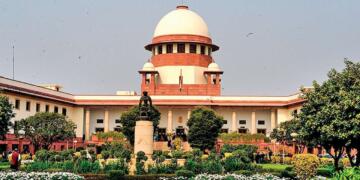Recent developments in Uttar Pradesh (UP) politics suggest an emerging power struggle between Chief Minister Yogi Adityanath and Deputy Chief Minister Keshav Prasad Maurya. Despite a recent meeting with BJP national president Jagat Prakash Nadda, Maurya’s actions indicate a continued effort to position himself as an alternative power center. This situation highlights the complex political landscape Yogi must navigate to maintain his authority.
Yogi’s Allies and Adversaries
Maurya’s recent meetings with political figures known to have differences with Yogi Adityanath have raised eyebrows. These include two encounters with Sanjay Nishad, the NISHAD party national president, who has previously criticized Yogi’s “bulldozer action.” This term refers to Yogi’s controversial policy of demolishing properties allegedly linked to criminals and protesters, which has drawn both praise and criticism.
Additionally, Maurya met with Suheldev Bharatiya Samaj Party (SBSP) chief Om Prakash Rajbhar, choosing this meeting over attending Yogi’s gathering of public representatives from Varanasi division. This decision seems to underscore Maurya’s intent to forge his own political alliances, potentially at the expense of Yogi’s leadership.
The Yogi Factor in UP By-polls
As UP prepares for by-elections in 10 assembly seats, Yogi is overseeing the BJP’s strategy. However, Maurya’s meetings with potential allies suggest an attempt to carve out his own sphere of influence. The NISHAD party’s desire to contest the Majhawan seat in Kanpur, despite BJP’s reluctance, adds another layer to this complex political landscape. Yogi’s ability to manage these competing interests while maintaining party unity will be crucial for the BJP’s success in these by-polls.
Yogi and the OBC Question
Maurya, Nishad, and Rajbhar are all Other Backward Classes (OBC) leaders. Their recent interactions hint at a possible consolidation of OBC leadership, potentially challenging Yogi’s authority. This becomes significant as the OBC vote, traditionally supportive of BJP in UP, is believed to have shifted in recent elections. Yogi, who comes from an upper caste background, may need to work harder to maintain the BJP’s appeal among OBC voters.
Challenging Yogi’s Administration
Maurya has questioned Yogi’s governance by taking steps that raise concerns about reservations in contractual government appointments. He has directed his queries to the chief secretary of the Department of Appointments and Personnel, which is under Yogi’s control. This move is seen as an indirect challenge to the Yogi administration and its commitment to OBC interests.
Furthermore, Maurya’s meetings with other OBC leaders, including former Sitapur MP Rajesh Verma and UP Cabinet Minister Dara Singh Chauhan, suggest a concerted effort to build a power base within the OBC community. This could potentially undermine Yogi’s authority and influence within the party and the state.
Yogi vs. Organization: The Power Play
At a key UP BJP meeting, Maurya made a statement emphasizing the organization’s importance over the government, widely interpreted as a veiled criticism of Yogi. Maurya’s subsequent actions suggest he’s not backing down from his stance, despite being summoned to meet Nadda in Delhi. This ongoing tension between Yogi’s government and the party organization poses a significant challenge for the Chief Minister.
Yogi’s Leadership Test
As these political maneuvers unfold, it’s clear that Yogi faces a complex challenge in maintaining his authority while managing internal party dynamics. His ability to balance the interests of various factions within the BJP, particularly the OBC leaders, will be crucial for his political future and the party’s success in UP.
Yogi’s reputation as a strong, sometimes controversial leader has been a double-edged sword. While it has helped him maintain a firm grip on the state’s administration, it has also created tensions within the party and with certain voter groups. How Yogi navigates these challenges will likely shape the political landscape of UP in the coming years.






























